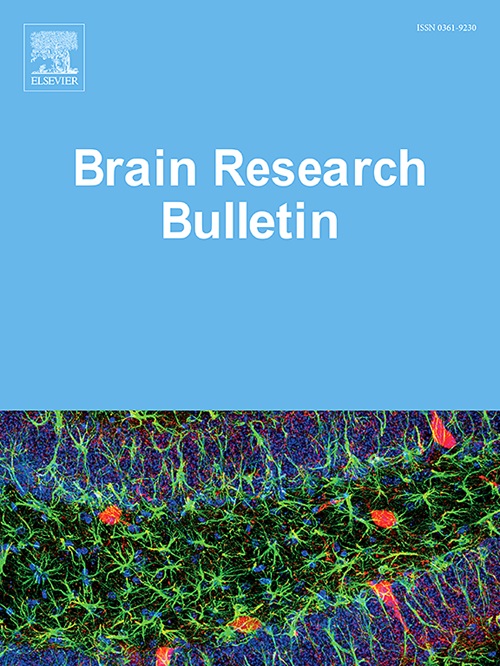GABAB receptors regulate the neural stem cell potential of Pkd2l1+ cerebrospinal fluid-contacting neurons via the PI3K/Akt signaling pathway
IF 3.5
3区 医学
Q2 NEUROSCIENCES
引用次数: 0
Abstract
Cerebrospinal fluid-contacting neurons (CSF-cNs) exhibit neural stem cell (NSC) properties both in vitro and in vivo, and they may play a critical role in recovery after spinal cord injury (SCI). GABAB receptors (GABABRs) are expressed in Pkd2l1+ CSF-cNs. However, their role in Pkd2l1+ CSF-cNs still needs to be discovered. In this study, we observed a significant reduction in GABABR expression in a murine model 7 d after SCI. We further discovered that GABABR activation enhanced the proliferation of Pkd2l1+ CSF-cNs while inhibiting apoptosis. Additionally, this activation mitigated vacuole loss and neuronal damage in the pericentral canal region of the spinal cord, attenuated myelin and axonal loss within the spinal cord, and facilitated motor function recovery in SCI model mice. Mechanistically, GABABR primed quiescent Pkd2l1+ CSF-cNs for cell cycle reentry through the activation of PI3K/Akt signaling. Our findings suggest that GABABR activation enhances the NSC potential of Pkd2l1+ CSF-cNs, ultimately enabling post-SCI recovery in murine models.
求助全文
约1分钟内获得全文
求助全文
来源期刊

Brain Research Bulletin
医学-神经科学
CiteScore
6.90
自引率
2.60%
发文量
253
审稿时长
67 days
期刊介绍:
The Brain Research Bulletin (BRB) aims to publish novel work that advances our knowledge of molecular and cellular mechanisms that underlie neural network properties associated with behavior, cognition and other brain functions during neurodevelopment and in the adult. Although clinical research is out of the Journal''s scope, the BRB also aims to publish translation research that provides insight into biological mechanisms and processes associated with neurodegeneration mechanisms, neurological diseases and neuropsychiatric disorders. The Journal is especially interested in research using novel methodologies, such as optogenetics, multielectrode array recordings and life imaging in wild-type and genetically-modified animal models, with the goal to advance our understanding of how neurons, glia and networks function in vivo.
 求助内容:
求助内容: 应助结果提醒方式:
应助结果提醒方式:


